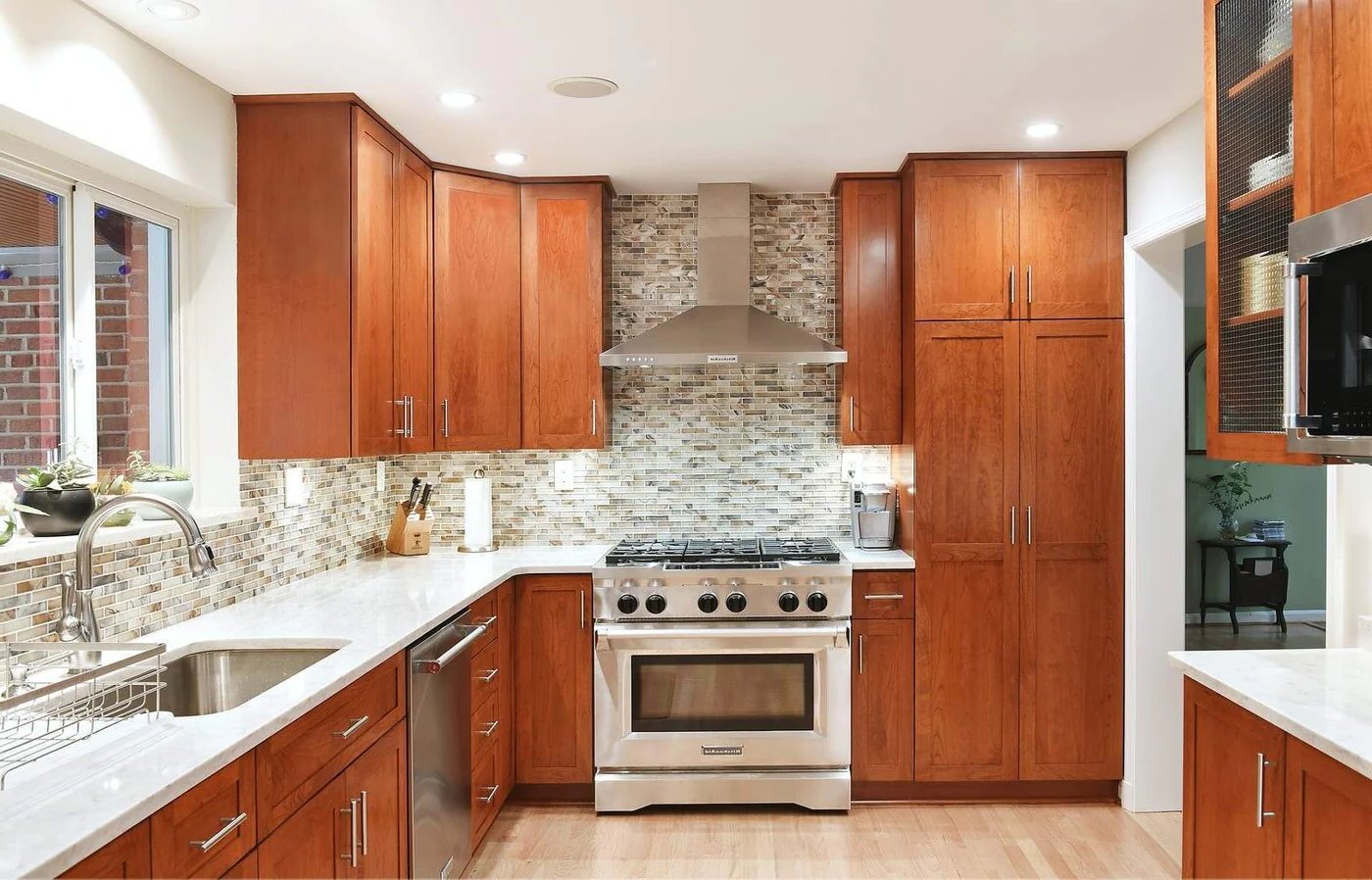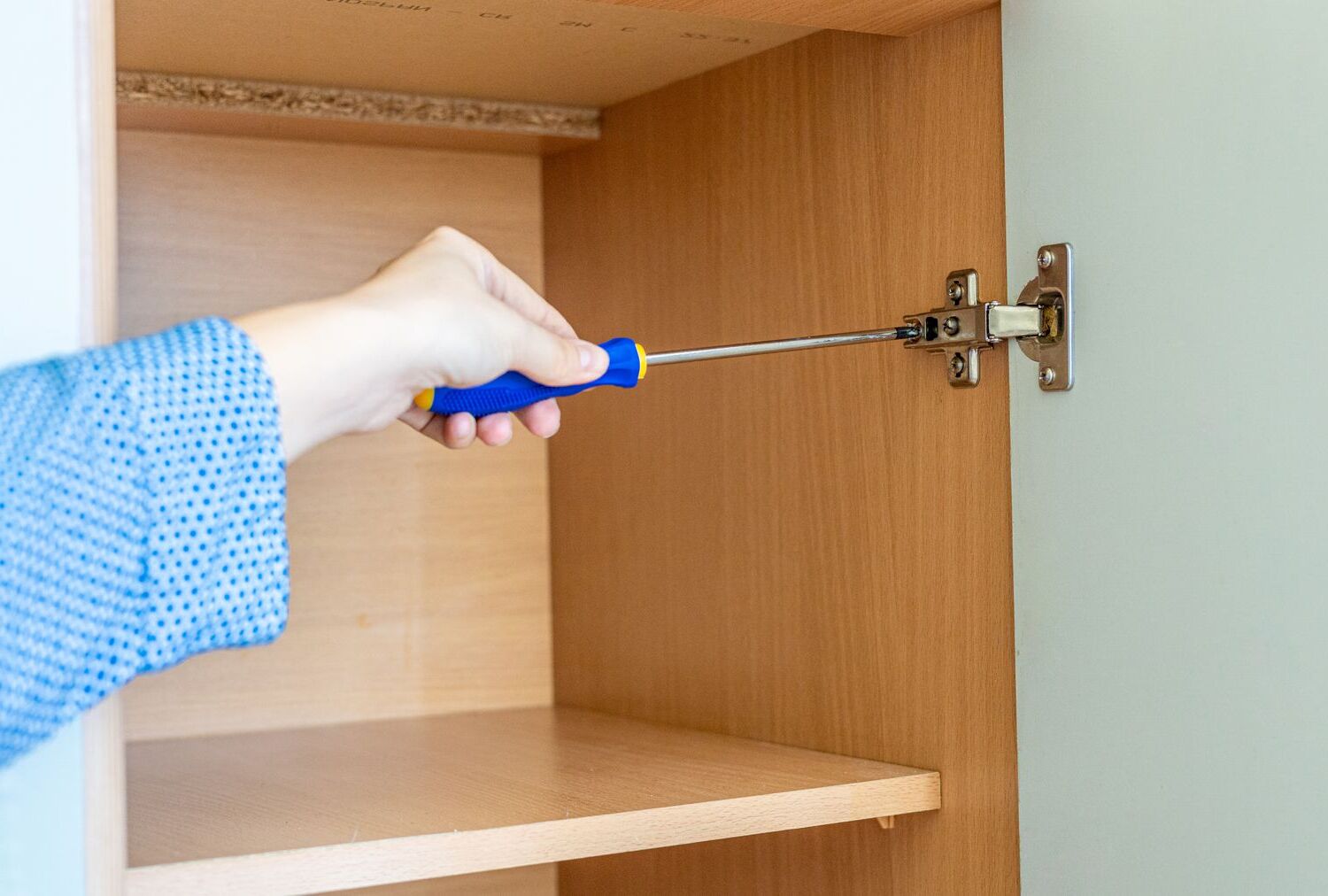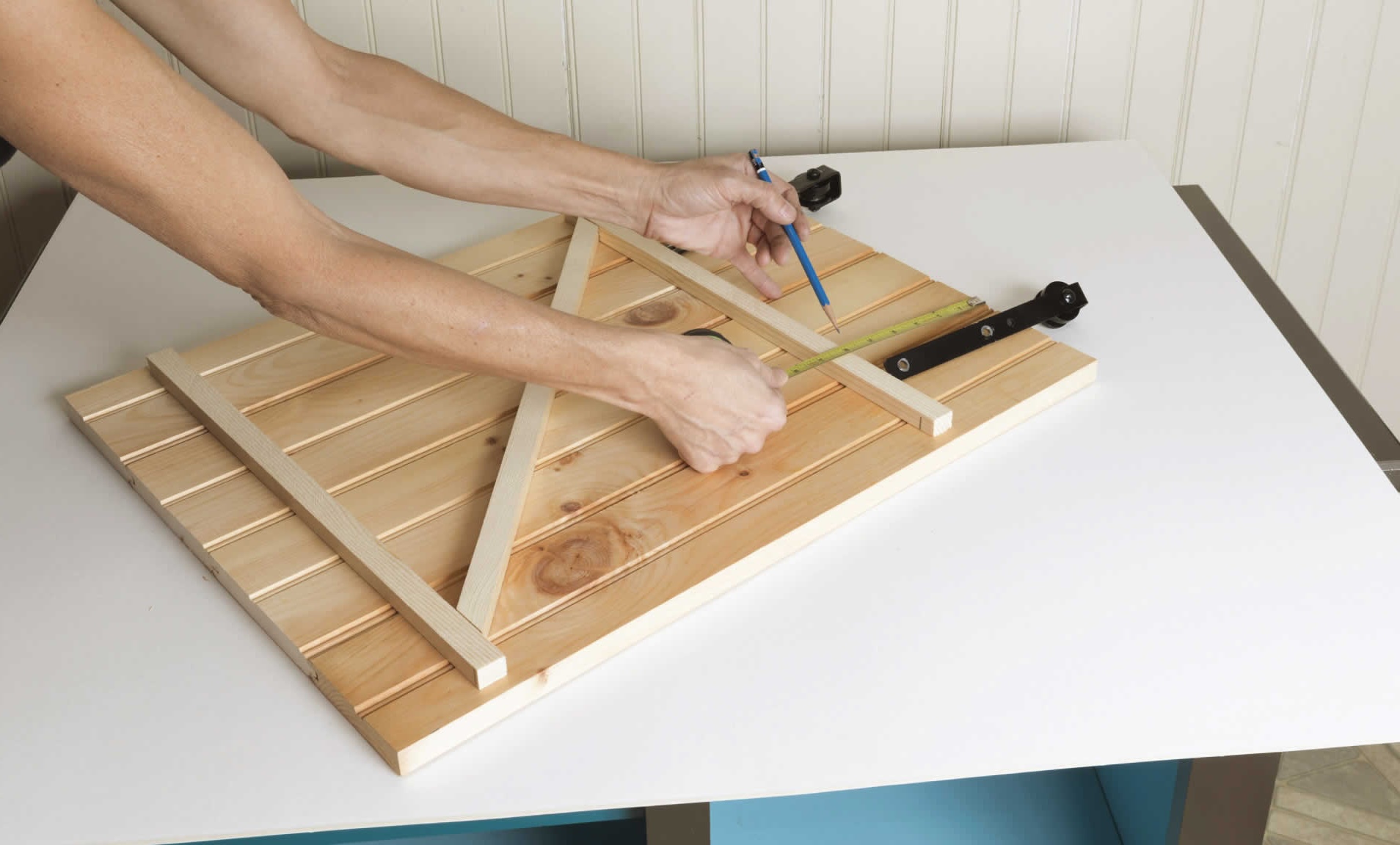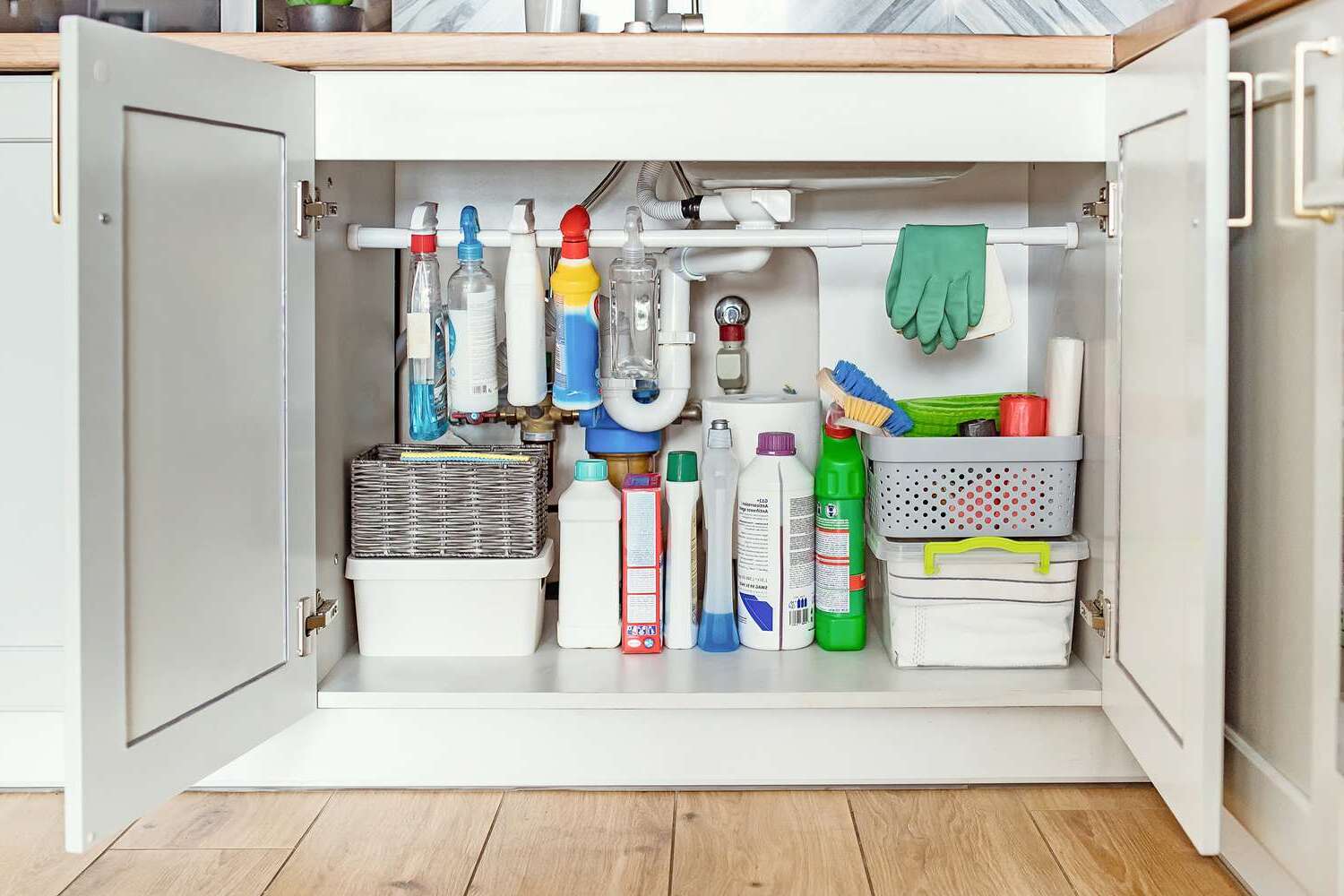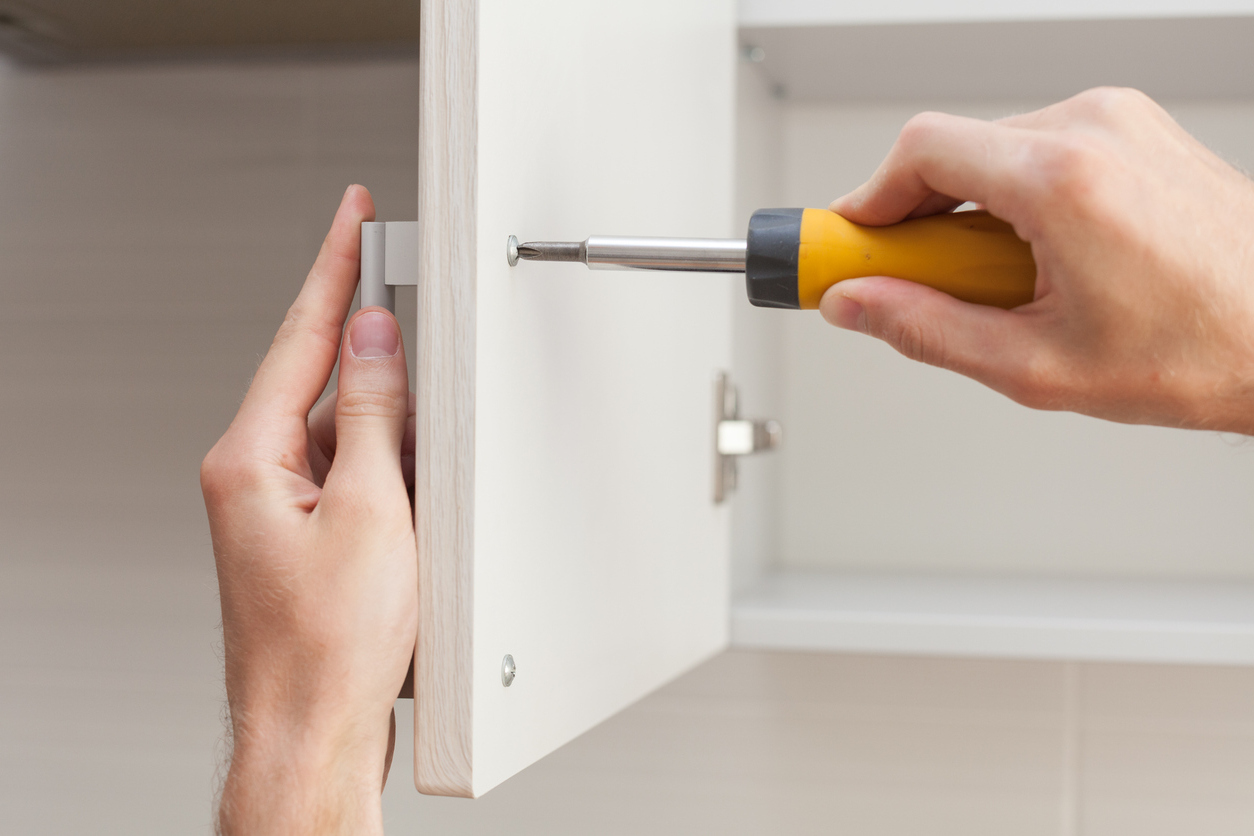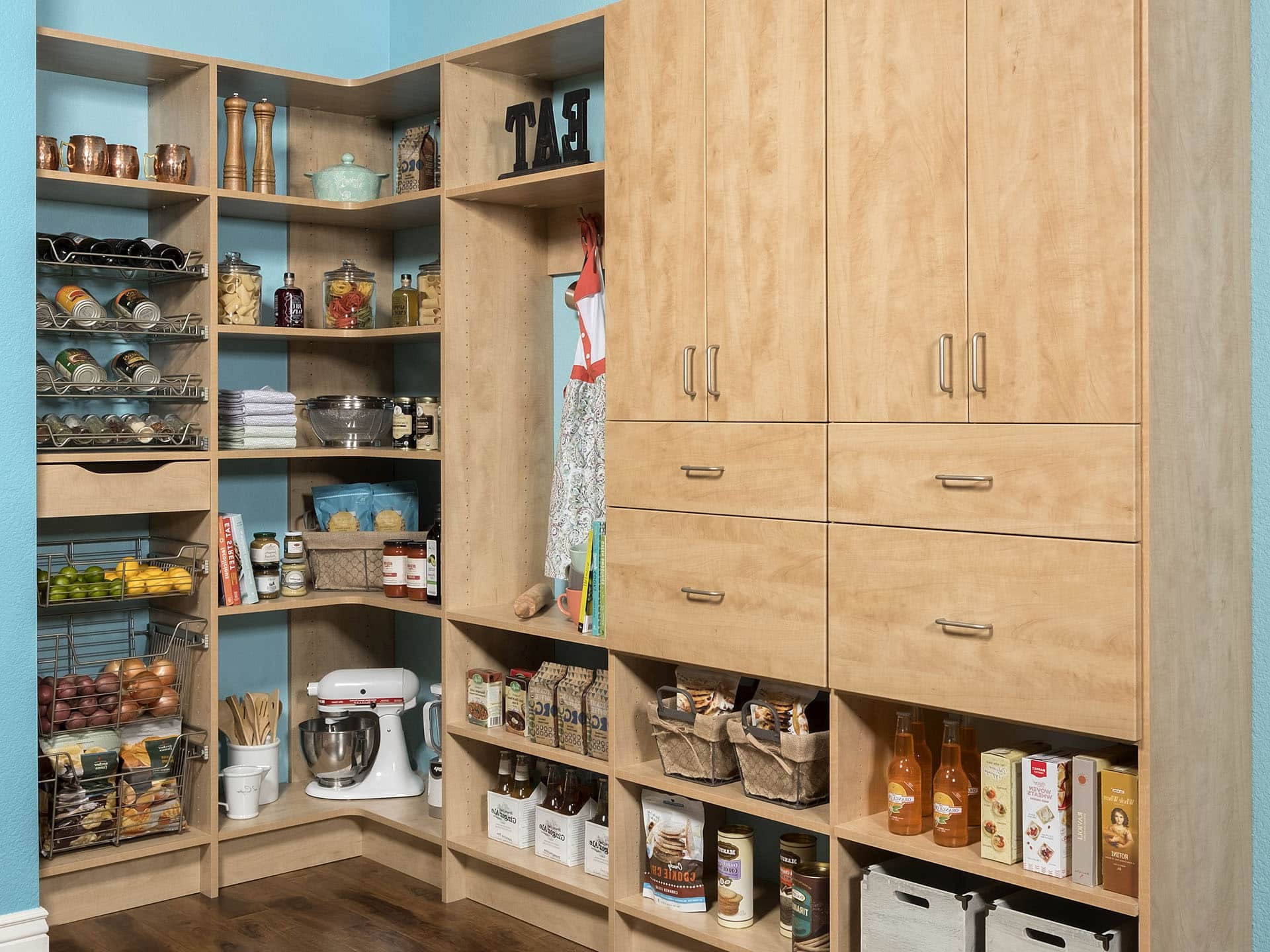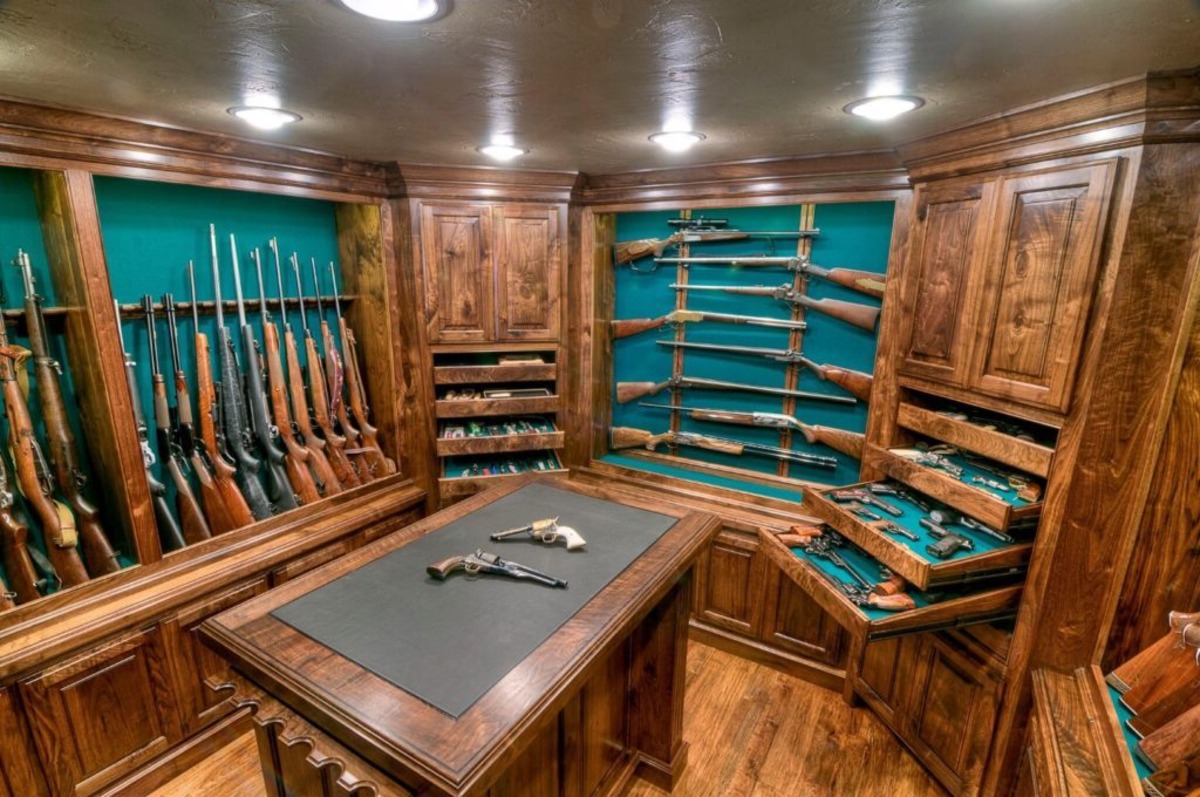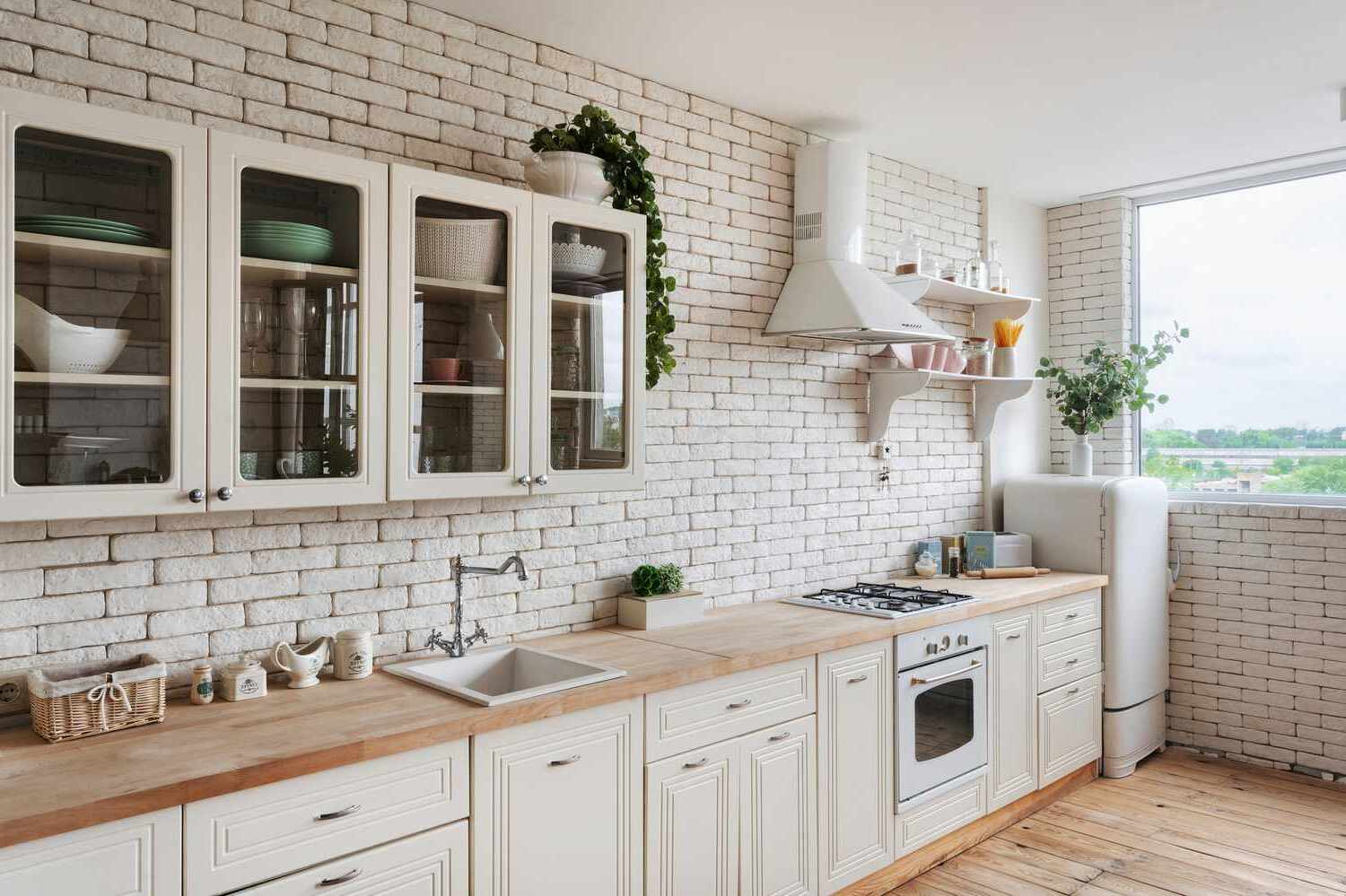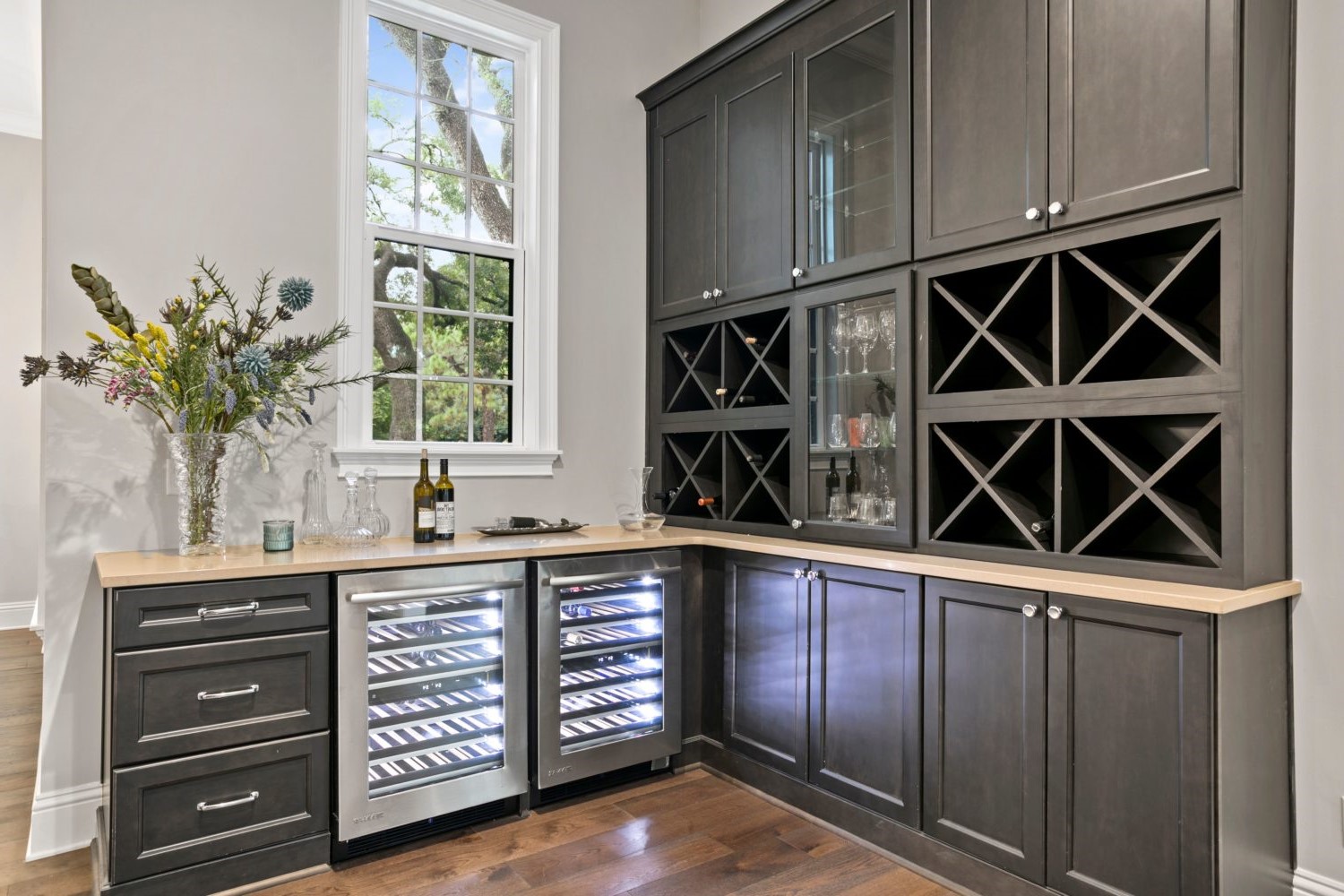Home>Create & Decorate>DIY & Crafts>How To Build A Base Cabinet
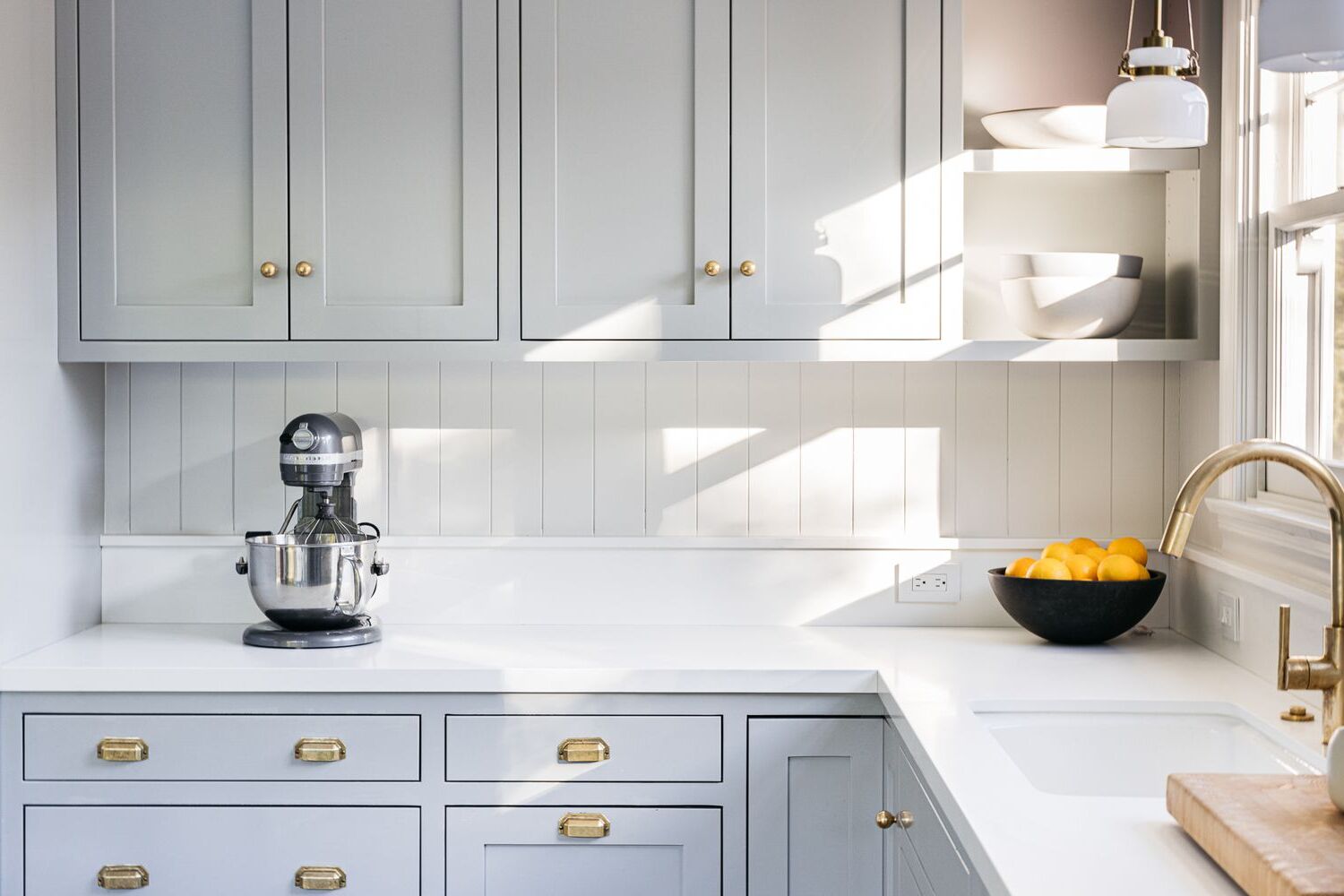

DIY & Crafts
How To Build A Base Cabinet
Published: February 28, 2024

Content Creator specializing in woodworking and interior transformations. Caegan's guides motivate readers to undertake their own projects, while his custom furniture adds a personal touch.
Learn how to build a base cabinet with our step-by-step DIY guide. Perfect for your next crafts project.
(Many of the links in this article redirect to a specific reviewed product. Your purchase of these products through affiliate links helps to generate commission for Twigandthistle.com, at no extra cost. Learn more)
Introduction
Building a base cabinet can be a rewarding and practical DIY project for anyone looking to enhance their home with custom storage solutions. Whether you're a seasoned woodworker or a novice DIY enthusiast, constructing a base cabinet allows you to tailor the design to fit your space and organizational needs perfectly. From kitchens to workshops, base cabinets serve as versatile storage units that can be customized to suit various purposes.
In this comprehensive guide, we will walk you through the step-by-step process of building a base cabinet from scratch. You'll learn how to gather the necessary materials and tools, measure and cut the wood with precision, assemble the cabinet box, install shelves and a back panel, attach the cabinet doors, and add the finishing touches. By following these instructions, you'll be able to create a sturdy and functional base cabinet that complements your space and meets your storage requirements.
Whether you're aiming to optimize kitchen storage, create a workbench with built-in storage, or organize a garage or utility room, a well-constructed base cabinet can make a significant difference. With the right guidance and a willingness to roll up your sleeves, you can embark on this DIY journey with confidence, knowing that the end result will be a practical and aesthetically pleasing addition to your home.
So, roll up your sleeves, gather your tools, and let's dive into the rewarding process of building your own base cabinet. Whether you're a DIY enthusiast or a homeowner looking to personalize your living space, this guide will equip you with the knowledge and skills needed to bring your vision to life. Let's get started on this fulfilling and practical DIY endeavor!
Read more: How To Build A Table Base
Step 1: Gather Materials and Tools
Before diving into the construction of a base cabinet, it's crucial to gather all the necessary materials and tools. Having everything at hand will streamline the building process and ensure a smooth workflow. Here's a comprehensive list of materials and tools you'll need for this project:
Materials:
- Plywood: Select high-quality plywood for the cabinet box, shelves, and doors. The thickness of the plywood will depend on the dimensions of your cabinet, but 3/4-inch plywood is commonly used for sturdiness.
- Lumber: Choose solid wood lumber for the face frame and door frames. Common options include oak, maple, or pine, depending on your preference and budget.
- Wood Screws: Opt for durable wood screws in various lengths to secure the cabinet components firmly.
- Wood Glue: High-quality wood glue is essential for reinforcing joints and ensuring the structural integrity of the cabinet.
- Cabinet Hardware: This includes hinges, drawer slides, knobs, and pulls. Select hardware that complements the overall design and meets your functional requirements.
- Finishing Materials: Sandpaper, wood stain, and polyurethane for a professional and durable finish.
Tools:
- Measuring Tape: Accurate measurements are crucial for precise cuts and assembly.
- Circular Saw or Table Saw: A reliable saw for cutting plywood and lumber to the required dimensions.
- Cordless Drill: Essential for driving screws and assembling the cabinet components.
- Clamps: These will aid in securing pieces during assembly and glue-up.
- Screwdriver Set: Both flathead and Phillips screwdrivers for various fastening needs.
- Wood Chisels: Useful for fine-tuning joinery and making precise adjustments.
- Router: If you plan to add decorative edges or profiles to the cabinet components.
- Safety Gear: Safety glasses, ear protection, and a dust mask for a safe and comfortable working environment.
By ensuring that you have all the required materials and tools on hand, you'll be well-prepared to embark on the next steps of this DIY journey. With everything in place, you can proceed to the exciting phase of measuring and cutting the wood to begin constructing the base cabinet.
Step 2: Measure and Cut the Wood
Accurate measurements and precise cuts are fundamental to the successful construction of a base cabinet. Before making any cuts, it's essential to carefully measure the plywood and lumber to ensure that each component fits together seamlessly. Here's a detailed breakdown of the process:
Read more: How to Build Built-In Cabinets
Measuring the Plywood and Lumber
Begin by measuring and marking the dimensions for the cabinet box, shelves, face frame, and door frames on the plywood and lumber. Use a measuring tape and a pencil to make clear and accurate marks, ensuring that the measurements align with your design plans. Double-check each measurement to avoid errors that could compromise the cabinet's structural integrity.
Cutting the Plywood and Lumber
Once the measurements are marked, it's time to cut the plywood and lumber to the specified dimensions. A circular saw or table saw is the go-to tool for making straight and precise cuts. When cutting the plywood, support it properly to prevent tear-out and ensure clean edges. For the face frame and door frames, use a miter saw to achieve precise angled cuts, if your design calls for them.
Fine-Tuning the Cuts
After cutting the components, use a sanding block or a power sander to smooth any rough edges and surfaces. This step is crucial for achieving a professional finish and ensuring that the pieces fit together seamlessly during assembly. Pay close attention to the edges that will be visible in the finished cabinet, as they contribute to the overall aesthetic appeal.
Organizing the Components
As you complete the cutting and sanding process, organize the components based on their intended use in the cabinet. Group together the pieces for the cabinet box, shelves, face frame, and door frames, labeling them if necessary. This organization will streamline the assembly process and help you stay organized as you progress through the construction steps.
By meticulously measuring and cutting the wood with precision, you'll set the stage for a successful cabinet assembly. The careful attention to detail at this stage will ensure that the cabinet components fit together seamlessly, laying a solid foundation for the next steps in the construction process.
Read more: How To Build A Corner Cabinet
Step 3: Assemble the Cabinet Box
With the wood components meticulously measured and cut, it's time to move on to the pivotal stage of assembling the cabinet box. This step forms the structural core of the base cabinet, laying the groundwork for the addition of shelves, doors, and finishing touches. The assembly process involves joining the plywood panels to form the main body of the cabinet, creating a sturdy and functional framework.
Assembling the Cabinet Sides, Top, and Bottom
Begin by laying out the plywood panels for the cabinet sides, top, and bottom in the designated workspace. Apply a thin, even layer of high-quality wood glue along the edges that will be joined together. Position the panels carefully, ensuring that they align perfectly according to the measurements and design plans. Once aligned, use wood screws to secure the panels, creating strong and durable joints. It's essential to pre-drill pilot holes to prevent the plywood from splitting when the screws are inserted.
Adding Internal Supports
To reinforce the cabinet box and provide additional support for the shelves, consider adding internal supports. These can be in the form of vertical dividers or horizontal braces, depending on the specific storage requirements and design of the cabinet. Secure these supports in place using wood glue and screws, ensuring that they are positioned accurately to accommodate the planned shelf placements.
Checking for Squareness and Alignment
As the cabinet box takes shape, it's crucial to periodically check for squareness and alignment throughout the assembly process. This involves measuring the diagonals of the cabinet box to ensure that they are equal in length, indicating that the structure is perfectly square. Additionally, use a carpenter's square to verify that the corners are precisely angled at 90 degrees. Attention to these details will result in a cabinet box that is not only structurally sound but also visually appealing.
Preparing for Shelf Installation
Once the cabinet box is fully assembled and confirmed to be square and aligned, it's time to prepare for the installation of shelves and the back panel. The sturdy and well-aligned cabinet box provides a solid foundation for these additional components, setting the stage for a fully functional storage unit.
By methodically assembling the cabinet box with precision and attention to detail, you'll establish a robust framework for the base cabinet. This foundational element forms the basis for the subsequent steps in the construction process, bringing you closer to the realization of a custom-built storage solution tailored to your specific needs.
Step 4: Install Shelves and Back Panel
With the cabinet box assembled, the next crucial step in building a base cabinet is the installation of shelves and the back panel. These components not only enhance the cabinet's functionality but also contribute to its structural integrity and overall aesthetic appeal.
Installing the Shelves
Begin by carefully measuring and marking the desired positions for the shelves within the cabinet box. Use a measuring tape and a pencil to ensure precision in determining the shelf placements. Depending on your storage needs, you may opt for adjustable shelf supports to accommodate items of varying heights.
Once the shelf positions are marked, install shelf supports or shelf pins at the designated locations within the cabinet box. These supports will provide stable platforms for the shelves to rest upon. Place the shelves onto the supports, ensuring that they fit snugly and are level. Secure the shelves in place by driving wood screws through the cabinet sides into the edges of the shelves, creating sturdy and reliable attachments.
Adding the Back Panel
The back panel serves as a crucial structural element, providing stability to the cabinet and preventing it from racking or twisting. Cut a piece of plywood to the exact dimensions of the back of the cabinet box. Position the back panel against the rear of the cabinet box, ensuring that it fits flush with the edges.
Secure the back panel in place by driving wood screws through the panel and into the back edges of the cabinet box. For added reinforcement, consider applying a bead of wood glue along the edges of the back panel before attaching it. This will create a strong bond between the panel and the cabinet box, further enhancing the cabinet's structural integrity.
Read more: How To Build A Shed Base On Grass
Fine-Tuning and Alignment
Once the shelves and back panel are installed, take a moment to verify the alignment and stability of these components. Use a level to ensure that the shelves are horizontal and evenly positioned. Additionally, check that the back panel is securely attached and sits flush with the cabinet box on all sides.
By meticulously installing the shelves and back panel, you'll transform the cabinet box into a fully functional and structurally sound storage unit. These components not only enhance the cabinet's organizational capabilities but also contribute to its overall strength and stability. With the shelves and back panel in place, the base cabinet is one step closer to fulfilling its intended purpose within your living space.
Step 5: Attach the Cabinet Doors
Attaching the cabinet doors is a pivotal step that adds functionality and aesthetic appeal to the base cabinet. The doors not only provide access to the cabinet's contents but also contribute to its overall visual impact. Proper installation of the doors ensures smooth operation and a polished finish, elevating the cabinet to a professional standard.
Preparing the Doors and Hinges
Before attaching the doors, it's essential to prepare them for installation. If the doors are unfinished, this is the ideal time to apply any desired paint, stain, or protective finish. Ensure that the finish complements the overall design of the cabinet and aligns with your aesthetic preferences.
Next, position the cabinet doors in front of the cabinet box to determine the ideal placement. Take precise measurements to ensure that the doors are evenly spaced and aligned with the edges of the cabinet box. This step is crucial for achieving a symmetrical and visually appealing result.
Once the door placement is determined, attach the hinges to the doors. Depending on the design and functionality of the cabinet, you may opt for traditional hinges or concealed hinges for a sleek and modern look. Carefully follow the manufacturer's instructions for installing the hinges to ensure proper alignment and smooth operation of the doors.
Attaching the Doors to the Cabinet Box
With the hinges securely attached to the doors, it's time to affix the doors to the cabinet box. Enlist the assistance of a helper to hold the doors in place while you position and secure them to the cabinet. Use shims or spacers to maintain consistent spacing between the doors and ensure that they open and close smoothly without rubbing against each other or the cabinet box.
Once the doors are aligned to your satisfaction, secure the hinges to the cabinet box using the provided screws. It's crucial to double-check the alignment and operation of the doors at this stage, making any necessary adjustments to ensure that they open and close seamlessly.
Read more: How to Build a DIY Garage Foundation
Testing and Adjustments
After attaching the doors, thoroughly test their operation to ensure that they open and close smoothly and align properly with the cabinet box. Make any necessary adjustments to the hinges or door placement to achieve optimal functionality and a visually pleasing result.
By methodically attaching the cabinet doors with precision and attention to detail, you'll elevate the base cabinet to a fully functional and visually appealing storage unit. The doors not only enhance the cabinet's usability but also contribute to its overall aesthetic impact, bringing you one step closer to completing this rewarding DIY project.
Step 6: Add Finishing Touches
As the base cabinet nears completion, adding finishing touches is the final step to elevate its visual appeal and durability. This phase involves applying a professional finish to the cabinet, ensuring that it seamlessly integrates into its intended space while withstanding daily use.
Sanding and Smoothing
Before applying any finish, it's essential to sand the entire cabinet surfaces thoroughly. Use fine-grit sandpaper to smooth out any rough spots, imperfections, or uneven edges. This step not only enhances the cabinet's tactile appeal but also provides a clean canvas for the subsequent finishing materials.
Staining or Painting
Depending on your design preferences, you can opt to stain the wood for a natural, rustic look or paint it to complement your existing decor. When applying stain, use a brush or cloth to ensure even coverage, allowing the wood's natural grain to shine through. For painting, consider using a high-quality paint suitable for wood surfaces, applying multiple thin coats for a smooth and durable finish.
Read more: How To Build A Refrigerator Cabinet
Protective Coating
Once the stain or paint has dried, it's crucial to apply a protective coating to safeguard the cabinet against moisture, scratches, and daily wear and tear. Polyurethane or a clear varnish can provide a durable and water-resistant finish, enhancing the cabinet's longevity and maintaining its aesthetic appeal over time.
Installing Hardware
The addition of knobs, pulls, and hinges serves as the final decorative and functional touch to the base cabinet. Choose hardware that complements the overall design and aligns with your personal style. Ensure that the hardware is installed securely, allowing for smooth operation of the cabinet doors and drawers.
Final Inspection
Before declaring the project complete, conduct a thorough inspection of the entire cabinet. Check for any remaining imperfections, ensure that the finish is consistent across all surfaces, and verify that the hardware is properly installed and aligned. Making any necessary touch-ups at this stage will result in a polished and professional-looking base cabinet.
By meticulously adding these finishing touches, you'll transform the base cabinet into a visually stunning and durable storage solution. The attention to detail in this final phase ensures that the cabinet not only meets your functional needs but also enhances the overall aesthetic of its surroundings. With the finishing touches in place, your custom-built base cabinet is ready to take its place as a practical and stylish addition to your home.
Conclusion
In conclusion, the process of building a base cabinet from scratch is a gratifying endeavor that yields a practical and personalized storage solution for your home. From the initial gathering of materials and tools to the final application of finishing touches, each step in the construction process contributes to the creation of a sturdy, functional, and visually appealing cabinet.
By meticulously measuring and cutting the wood, assembling the cabinet box, installing shelves and a back panel, attaching the cabinet doors, and adding finishing touches, you have embarked on a journey that combines craftsmanship with creativity. The attention to detail at each stage ensures that the base cabinet not only meets your specific storage needs but also enhances the aesthetic appeal of its surroundings.
Throughout this DIY project, you have honed your woodworking skills, exercised precision in assembly, and made design decisions that reflect your personal style. The result is a custom-built base cabinet that seamlessly integrates into your living space, providing efficient storage and adding a touch of craftsmanship to your home.
As you stand back and admire the completed base cabinet, take pride in the fact that you have created a functional piece of furniture that is a testament to your creativity and dedication. Whether it finds its place in the kitchen, workshop, garage, or any other area of your home, the base cabinet stands as a symbol of your ability to transform raw materials into a practical and visually appealing asset.
Moving forward, the knowledge and skills gained from this project can be applied to future woodworking endeavors, empowering you to tackle increasingly complex and rewarding DIY projects. Whether it's building additional cabinets, crafting custom furniture pieces, or taking on larger woodworking challenges, the experience gained from constructing a base cabinet serves as a solid foundation for future creative pursuits.
In the end, the base cabinet you have built is not just a piece of furniture; it's a reflection of your ingenuity and a tangible expression of your commitment to enhancing your living space through hands-on craftsmanship. As you enjoy the functionality and beauty of your custom-built base cabinet, take pride in the fact that you have transformed raw materials into a practical and aesthetically pleasing addition to your home.

